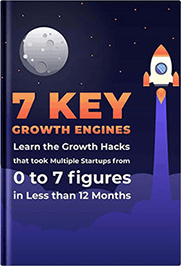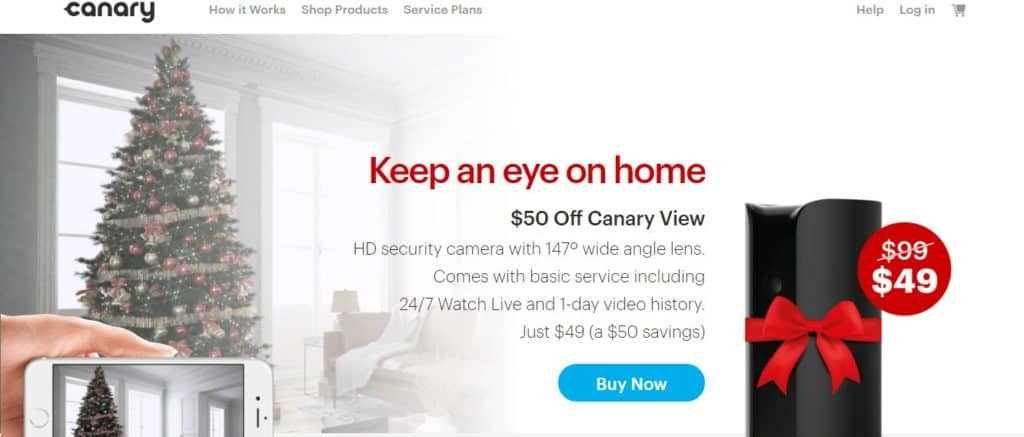
Introduction
Canary Home Security is an online company that provides security systems for homes. The system comprises of a wide-angle UHD camera, a motion-sensing technology and air, humidity & temperature sensors all assembled together into a single device, which work together to give maximum protection to homes.
Having been launched back in 2012, the company is currently valued at $66m having undergone 4 funding rounds, the latest funding having been on 16th October, 2018 from an undisclosed round.
According to Privacytips.co, a year later after its launch, on 1st of August, Canary Home Security received a Seed Round funding from 4 investors. On 5th of March, 2014 the company received a Series A funding from 4 investors.
Around a year later, on 1st of June 2015, the company received Series B funding from 5 investors and as mentioned above the latest funding round as mentioned above was in October 2018.
That has been the course for Canary Home Security. The company has grown to where it is now through crowdfunding over the few years. This case study, therefore, takes close scrutiny of strategies and strings that the founders Adam Sager, Jon Troutman, and Chris Rill pulled together to get to this level.
Strategies That Canary Home Security Used to Grow
While there are so many strategies that Canary used to rise to where they are now, harnessing the power of crowdfunding and videos was the most one of their main reasons for growth.
That is what we will look at in details before we mention other additional strategies all from two interviews done by Shopify and Vimeo featuring two ( Jon Troutman and Adam Sager respectively) of the three co-founders.
1. Harnessing the Power of Crowdfunding and Videos
Just like Con Man – one of the Indiegogo campaigns that have been recently so much successful, Canary has done quite well as well. Ever since they got going, they have used the video marketing strategy which has seen their results stagger.
In just but hours, they managed to raise $2m which, by a mile had blown past their initial target of raising $100k.
That was quite impressive and from the interview conducted by Vimeo, the company’s co-founder Jon Troutman managed to unearth deep insight into how video marketing was of huge importance through their crowdfunding campaign.
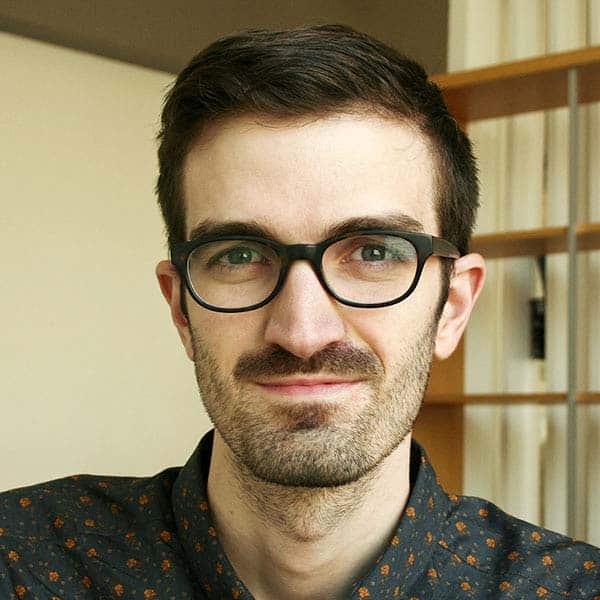
Jon Troutman also explained why to upload and share was one of the most critical parts of the success they currently have at the company.
Jon Troutman at the beginning of the interview claimed that they did not know that crowdfunding would be part of their business plan even when the idea of Canary first came up.
He claimed;
While crowdfunding wasn’t part of our initial plan, it did play an important role in our growth as a company and in the way we approached our product development. Crowdfunding allowed us to validate quickly — and in a big way — the fact that there wasn’t any other product like Canary out there.”
Even after claiming that, he went on and added how important crowdfunding has been to their company.
He said;
It also gave us access to a passionate and invested community of backers who were invaluable in providing insights and feedback throughout our development process.”
Vimeo, being one of the prominent video sharing platforms asked Jon Troutman more on what the Canary team did on their Security System videos that made it go so viral and look outstanding. We will look at them below.
a) Came Up With Their Own Original Video for Marketing
When asked if his video was outsourced or developed in-house, Jon Troutman claimed that all they wanted with the video was to tell a story about their product in a such a convincing way that their potential backers could feel was real and inspire them.
Not only that though, but they also wanted to inspire the audience as well so that they start experiencing their product as the watched the video.
For all that to happen the Canary team needed a “high quality video” as Jon Troutman puts it.
He says;
In order to do this, we needed to invest in writing a solid script and producing a high-quality video. The script was the easier part. We knew exactly what we were building, why we were building it, and who we were building it for. The harder part was making sure that the direction and production quality of the video was held up to the same standard as we held the product we were building.”
That happened in-house as the co-founders had planned. However, Jon Troutman confirms that they sought some little help from friends who happened to have had experience in video editing and filmmaking
He says,
Luckily, I had the advantage of being close friends with some incredible filmmakers based out of Salt Lake City, Utah, who collaborated with us on our Indiegogo video. The director, Julian Acosta, flew out to NYC and spent a week with us filming the interviews, footage of the Canary device in people’s homes, and footage of our prototyping process. We worked with them on getting a final edit that we were all happy with. It was a really great process.”
b) Created an Educative and Creative Control Video
The two main reasons why the Canary team created the video was to articulate what their company was and what their product would do for them.
He says;
We wanted the video to do two things: clearly articulate what Canary is, and show people how it could fit into their lives. The first part was especially important because we were creating an entirely new category with this product, so we needed to educate people and introduce them to the concept of an intelligent all-in-one home security device.”
He goes on to explain that the challenge during this stage was to “combine the geeky tech-specs and education aspect with the more inspirational storytelling”
He explained;
We wanted the video to keep a consistent tone and energy throughout, and this is really where expert direction, cinematography, and editing played such a key role. Creative control was not an issue because Julian was someone I’d collaborated with in the past, so we were aligned creatively on how we wanted the video to turn out.”
c) Matching and Synchronizing the Services Offered as Mirrored in the Video Created for Marketing
Jon Troutman says that they think of their video marketing as “one holistic relationship that Canary has” with their users.
He goes on to explain;
It’s certainly helpful that we have an amazing team of in-house designers (and I use that term in its broadest sense) that think about and work on the entire experience, as opposed to outsourcing all the bits and pieces to separate groups.
What We Can Learn From Canary’s Video Marketing From the Interview
In summary, Jon Troutman described the video as “an extremely powerful tool” as long as they are created perfectly and they immerse people in a realistic experience before they finally lay hands on them.
Jon in the interview went on and advised other brands.
He said;
The best way to think about the video is as a single touchpoint in a larger relationship that someone will have with your product or brand. You need to ask yourself, at what point will someone encounter this video? How will this video help meet the customer’s needs at that specific point? What tone will it set? What expectations will it introduce? The most important thing is that you know exactly what role the video is meant to play, so that it can be effective and valuable to both you and the customer.”
Other Strategies and Funding Approaches Canary Used to Grow
In another email interview conducted by Shopify with Adam Sager, the CEO of Canary, he explained all other approaches they used to attain the funding and engaging supporters as well.
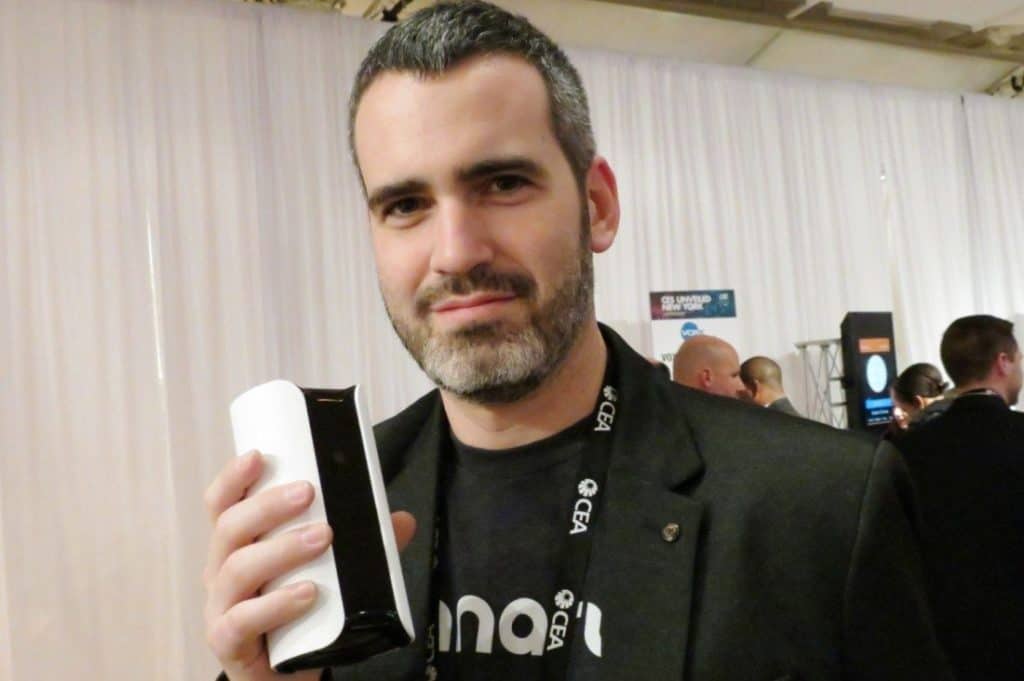
1.The Initial Crowdfunding Initiative
Adam Sager explained that they managed to raise some little funds prior to the first crowdfunding initiative which raised a $10m series.
He explains;
We raised money prior because we decided early on that we wanted to have the manufacturer, design, pricing, timeline, industrial design, and other large pieces of the project done before crowdfunding. We knew who we wanted to be as a company, and the impact we wanted to have on the world. This goal meant we needed to hire people before crowdfunding, which meant we needed a seed round of funding to get things going.”
When the first crowdfunding initiative was done, the team decided to turn their Canary into the company officially. Adam affirms:
Once we finished our crowdfunding round, the Series A set us up to grow Canary into a company. Specifically, the funding allowed us to hire the best people and push development of the hardware and software forward faster, including our unique machine-learning layer that will help reduce false alarms dramatically.”
The Importance of the Initial Crowdfunding
i) Establishment of a product market fit – Adam and the Co realized that the problem they were trying to solve had been resonated by their customers.
ii) Establishment of the size of the market for their products – Adam explains:
Not only were there people out there who wanted this thing, there were a lot of people out there who wanted it. We had orders from 78 different countries. These first two points allowed us to not just say, but show venture capitalists why we would be successful.”
To add to that, the team had initially posted on Indiegogo about their target market.
They wrote;
We believe that everyone — not just homeowners or the wealthy — should have the ability to secure the people, pets, and things they care about the most”
VentureBeat
iii) Finance the first orders of the product – The crowdfunding enabled them to finance their first product
2. The Need to Find One of the Most Established International Crowdfunding Website in Indiegogo
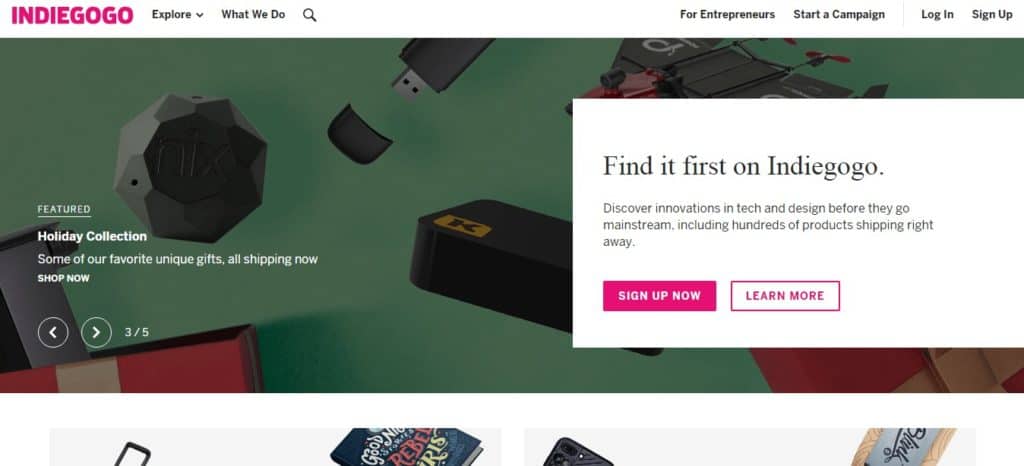
Adam and his team clearly knew that they needed an already established international crowdfunding website for their crowdfunding process. And it is during this time that they chose Indiegogo.
Indiegogo is a customizable platform, founded in 2008 and charges a 5% fee on contributions. It was super perfect for Canary as Adam claimed.
Furthermore, the company has done large crowdfunding initiatives with even prominent international companies like Let’s Give Karen – The bus monitor which raised a whopping $700k in excess.
There is also the Let’s Build a Goddamn Tesla Museum crowdfunding initiative which raised a total $1.3m.
All these crowdfunding initiatives among others explain why Indiegogo was the perfect choice for Canary. Adam claims:
We chose to use Indiegogo because they had a customizable platform where we could tell the story in our own way. There was a lot of flexibility around that, which we liked. Additionally, Indiegogo allows project creators the option to sell multiple units of their product while some of the other major crowdfunding platforms don’t allow “multiple item” perks.We communicated regularly with Indiegogo throughout the campaign and are still in touch.”
3. Setting Initial Goals
According to Adam, the team decided to come up with a known target in terms of the amount of money they needed to get going.
Adam confirms;
We set a goal of $100,000 because that was the minimum amount we needed to cover tooling and manufacturing costs. The pricing of our perks was based on estimated costs of materials, manufacturing fees, and market research. Our goal was to create a high quality product at a price point that was accessible to most people.”
4. Reward Selection
When Adam Sager was asked about reward selection, he insisted of choice.
He said;
When selecting your rewards it’s important to include other perk levels besides the minimum amount required for a backer to receive the product. There should be a tier for backers who simply want to contribute a small amount to the campaign but don’t necessarily want to receive anything in return. Similarly, other backers will want to contribute a smaller amount in order to receive an entry-level perk, like a t-shirt. Finally, there may be backers for whom money is no object, so you should consider creating an exclusive perk that gives them special access to the team or a unique experience.”
The team as Adam says made sure they made quite a remarkable offer in the name of a reward known as a collector’s kit.
He said;
The idea behind our top reward tier— Collector’s Edition — was to offer a one-of-a-kind experience for a backer who was especially excited about the product and wanted to make a more significant contribution to the development of Canary. The backer who chose that perk will receive the first Canary off the production line, signed by the team, and was flown to NYC to spend a day with our team.”
5. Engaging With the Audience

For any business, engagement is usually very crucial and to Canary, they took engagement with . their clients quite seriously.
Adam said;
When you crowdfund a product, engaging with your supporters is the most important and most enjoyable part of the process. It was humbling for us to hear from people all around the world who were as excited about Canary as we were.”
He added that their engagement strategy focused on 4 other things; Listening, showing gratitude, building trust and maintaining Engagement. During the interview, he broke down the four explaining each of them in details.
a) Listening
Listening is a special skill and as Adam said in the interview, they took the skill quite seriously.
He explained;
We received thousands of comments, tweets, emails, and Facebook messages from backers offering suggestions, asking questions, and telling us about their lives.”
After they listened to their clients, they did not just leave it there. Instead, they strived to respond to everything they were asked.
He said;
We worked hard to answer every question and thoroughly considered all the feedback we received, some of which lead to product changes (for example, we added in an Ethernet port after we learned that Wi-Fi wasn’t as reliable in some countries).”
b) Show Appreciation
Gratitude is one way of appreciating your customers and Canary did just that.
Adam says:
We wouldn’t be where we are now without the generous support of our backers, and we’ve continually made it a point to show them how grateful we are. He went on and added an example which they showed gratitude to their customers “For instance, we sent handwritten thank-you notes to many of our early backers and held contests where backers could win t-shirts and free Canary devices.”
c) Build Trust
Without trust from your customers, your business is not going to do so well. Adam and his team have really worked hand in hand and hard enough to build trust from their clients.
He explains:
Whether we’re answering questions from potential customers or sending updates to our backers, we always strive to be trustworthy and transparent. Trust isn’t built instantly but rather it’s a continual process of being honest, communicating with backers regularly, and making decisions that are in your backers’ best interest.”
d) Engage your Audience Always
The team has always strived to maintain their engagement with their customers and the Canary team vowed to keep on trying to engage with their supporters.
Adam said;
Crowdfunding is a journey and we want our backers to be involved throughout the entire process, not just at the beginning and the end. Through social media, blog posts, and monthly campaign updates, we continue to keep our supporters informed and engaged since the campaign has ended.”
6. Detailed Campaign Page
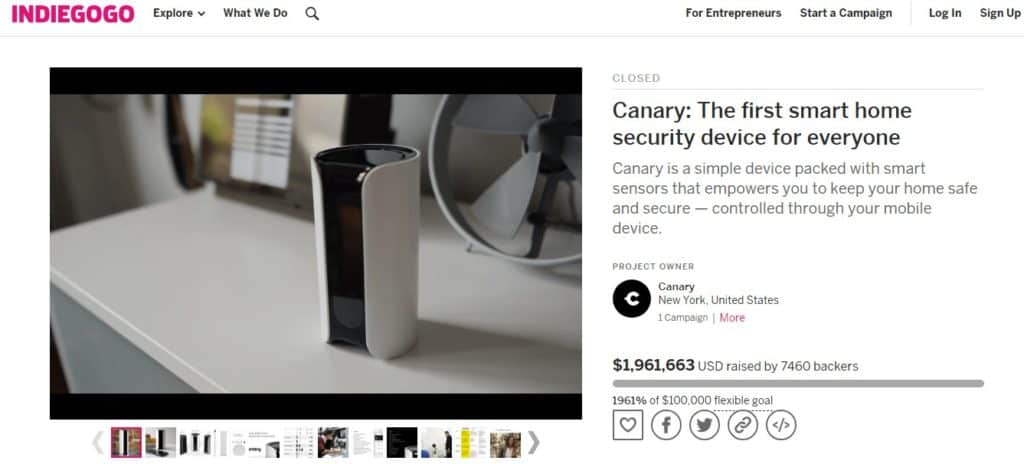
Adam agrees that their campaign page is quite long and detailed but the aim of the details but with reasons. He clearly pinpoints how the page is strategically set from the top, to the middle and to the bottom.
He said;
Over the course of our campaign, the page grew as we expanded our FAQ based on messages we received from backers. A long page isn’t inherently bad, but it’s important to order the content strategically. The top portion of the page should give a reader a very clear understanding of what the product is, what problem it solves, how it compares to other products on the market, and why it’s important to them”.
He goes on to add;
Visitors should not have to read the entire campaign page to understand these things. The rest of the page can be dedicated to details and commonly asked questions for supporters who want more information. At the end of the day, there is no “right” length. Some people will skim, others will devour – you need to have content for both. Organizing your content properly is the best way to ensure it suits all audiences.”
7. Other Deep Crowdfunding Secrets
Anyone who has done crowdfunding from scratch knows that it is not that simple.
Adam confirms;
Crowdfunding isn’t easy. It takes a lot of hard work and planning. The success of our campaign wasn’t the result of any secret tactics, but there are a couple of things we did that are more important than some people may realize.”
Adam goes ahead and reveals the deep crowdfunding secrets they had to do to get where they are now. He names two important secrets; Telling a story about what you can do to others and Spending money to make money which he elaborates below.
a) Telling a Story About What You Can Do to Others
Most brands, companies or startups do fail here according to Adams. He explains that people care more about themselves than any other thing. That is why trying to tell them how your amazing your product is, does not guarantee that they will buy it when it comes down to it.
Adam however, puts it right saying;
Instead, tell people how your product will fit into their lives in a meaningful way and solve problems they face. Make your campaign about people rather than tech specs and feature lists.”
b) Spending Funds to Make More Funds
Spend money to make money is a philosophy that most startups work by. There are moments in business in which you need to keep investing even if its money made outside the business.
These are critical moments and as Adam puts it;
There are certain things that are critical to the success of your campaign, and if you’re not an expert in these areas it’s worth investing some money to have them done well”
Adam went on and gave an example of what happened at Canary.
He said:
For example, we hired an experienced director to film our video so we could better tell our story. Hiring professional PR assistance can also be a worthwhile investment depending on the scope of your project and the size of your team.”
8. Partnerships and the Manufacturing Process of Their Products

For a partnership, Canary had to go international to ensure that they found the ideal manufacturers of their product.
Adam confirms;
We partnered with one of the top consumer electronics manufacturers in China to produce Canary. Finding a manufacturing partner was not a decision we took lightly. Before we launched our campaign, we took recommendations from friends, colleagues, and partners both here and in China and then visited a number of facilities in person before making our decision.”
Adam then went on and described the manufacturing process in which their product undergoes.
He said:
The manufacturing process can essentially be summed up as testing, iterating, testing and more testing. We would assemble a small batch of devices, conduct exhaustive tests on every component, refine the design, and then start the process over again. With hardware, unlike software, you need to make sure the product is perfect before you send it to backers. In most situations, iterating after you launch is extremely difficult if not impossible.”
9. Testing the Market for Their Product

The team conducted all available close people to find out if there was a real need for their security device.
Adam confirms:
First we talked to everyone who would listen to us—our friends, family, strangers—and tried to understand how they solved the home security problem and what they thought about our idea. We found that a real need existed for a new kind of security product”
They did not stop there though, they went on and conducted a survey through the internet from a bigger audience who did not know about the product.
He says:
Second, we conducted an online survey to get insight from a much larger group of people who didn’t know us personally. And third, we presented our idea at local meetups and received a lot of interest and positive feedback from other entrepreneurs and early adopters.”
A Brief Discussion on How Canary Transitioned From Campaign to Real Business
Adam confirmed that the Canary’s transition, lied in two things: trying to build a team to get to where they wanted and expounding their vision for their products.
He said;
We never really had a mental transition since we knew from the beginning that we wanted Canary to be a company and not just a single product. Our crowdfunding campaign accelerated our growth as a company and the transition really lies in two things – building out our vision for Canary products, and building the team to get there. A successful campaign wasn’t our end goal, but rather the first stage of our roadmap.”
It was after they hit their first stage on their roadmap, that they realized that their crowdfunding campaign had proved to be successful and they got the opportunity to get their first product to the market.
Adam explains:
The money we raised through crowdfunding is being used to bring our first product to market. Based on the success of our campaign, we were able to easily show venture capitalists product-market fit, which is one of the first things they look for in an investment.”
Once their first round of funding had proved to be successful, they decided to carry out successive series of funding. The funding was against successful and it gave them the next challenge. To try and build a team of players.
Adam says:
The round of funding we raised from VC’s allowed us to build out an amazing team that’s quickly approaching 50 employees. Harnessing their expertise, we’ve been able to build a product roadmap and strategy with big ideas that will help ensure we’re around for years to come.”
Welcoming Competition
At least every business has competition and as always, competition is very healthy. Adam Sager understands However, he is quick to defend their product saying;
Source: Forbes
There are billions of cameras in the world today. We think our device is the best and most beautiful, but the open platform is the future.”
Even after saying that, he goes on to prove that their product did quite really well in the first year of launch. He says:
Source: Businessinsider
We’ve had an incredible year,” says Sager. “Our first year was bigger than Fitbit, GoPro, and Dropcam’s first year, combined
The future of Canary
There is a lot more going on at Canary. There is more going on on the technological side of the company where the team is trying to improve their product. They want it to be more of software than hardware.
All the system advancements is being done in the name of trying to simplify things as well as coming up with a system that is lethal in a way that it solve all the problems their clients are facing.
Jon Troutman says;
In the Internet of Things industry right now there’s a lot of people still focused on the tech side of it, a lot of companies that are looking to make the next new gadget. What we’re doing is designed to leverage technology to solve problems. And home security is a huge problem that exists all throughout the U.S. and throughout the world. It’s such a huge need for people. They just want something that works; that’s going to make their life simple and solve problems for them. “
Source: Inc
Wrapping It Up
Maybe you are an entrepreneur looking forward to launching a crowdfunding campaign, or you have a company and want to seek for more funds, you can emulate Canary’s strategies laid above.
You may encounter a number of challenges on your way, but if you follow the strategies accompanied with relentless hard work, you will have a successful crowdfunding campaign that will kick-start or elevate your startup.



